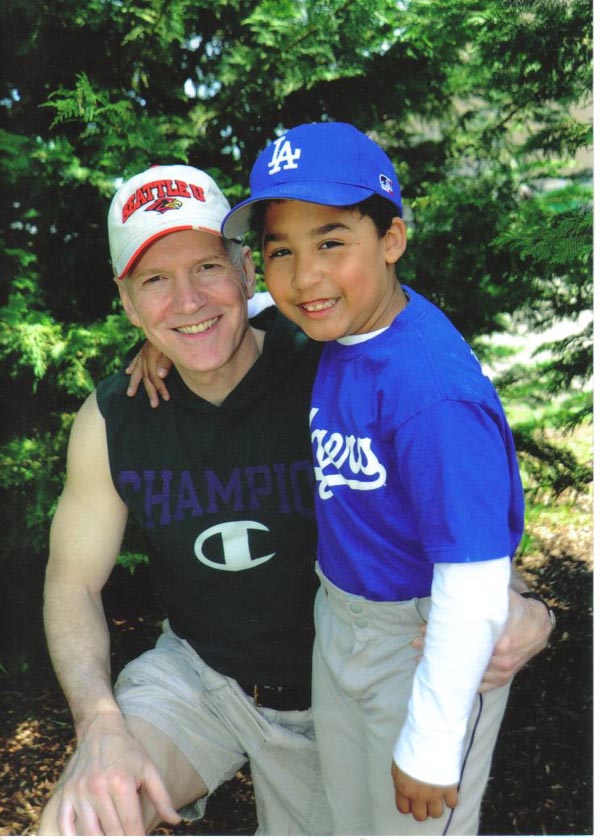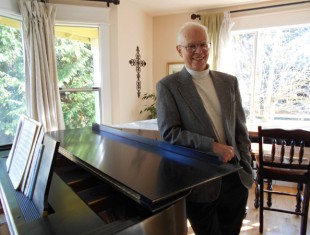Clay Moyle and son Caleb
I’m sure that most people were probably very surprised to hear that 27-year-old offensive lineman John Moffitt, a former third round pick of the Seattle Seahawks who was playing for the Denver Broncos this season has decided to retire from the NFL. Not only did he choose to quit midway through what is only his third season in the league but he’s giving up a little more than $1 million dollars in salary over the balance of this year and the next.
But, I’m actually surprised it doesn’t happen more frequently. Oh, I know NFL players make a lot of money and it’s the boyhood dream of millions of youngsters to play professional sports for a living, but I suspect it’s much more of a grind and a lot less fun for many of those young men than most folks realize.
I read about Moffitt’s decision to retire in an article written by Arnie Stapleton of the Associated Press and was left with the impression it was a well-thought out move by the young man. I’ll be even more surprised if he reconsiders at any point and returns to the game.
His reasons for quitting were pretty simple really. He wasn’t happy playing the game and thought it was madness to risk his health for the sake of money.
Moffitt, who has made approximately $1.8 million before taxes in his two-and-half seasons in the NFL says it’s not like he’s a millionaire, but he’s put away some money and it appears as though the articulate and intelligent young man may have aspirations to work in the media field.
He comes across as a very down to earth individual with simple wants and needs and I suspect he’ll make out just fine.
In fact, chances are he’ll make out much better than many NFL millionaires who are already suffering or likely will in the future from something called chronic traumatic encephalopathy (CTE). CTE is a degenerative condition that is believed to be caused by head trauma and is being linked to depression and dementia.
In October, I had a chance to watch an eye opening documentary titled League of Denial: The NFL’s Concussion Crisis (based on a book under the same title by Mark Fainaru-Wada and Steve Fainaru) and have to say it really caused me to stop and question whether or not I really want my 10-year-old son to ever play the game of football. It was downright scary to see the former players and hear of their suffering from depression, memory loss, dementia and brain damage.
Dr. Ann McKee, considered the leading expert on brain damage suffered as a result of football, told the authors she believes most NFL players will suffer from brain damage and it will just be a matter of the degree. Since 2005, McKee has studied 54 brains harvested from deceased NFL players and found CTE in all but two of them.
Even more disturbing to me, was she found evidence of it in the brain of a deceased high school football player she studied as well.
Just this past week, it was learned former Dallas Cowboys Hall of Fame running back Tony Dorsett and former stars Joe DeLamielleure and Leonard Marshall had undergone brain scans and clinical evaluations during the past three months at UCLA and were diagnosed with signs of CTE. The university tested five other former players last year and determined there was evidence of CTE in each of them as well.
Dorsett, now 60-years-old, said when he flew from Dallas to Los Angeles for the testing he had difficulty remembering why he was on the plane and where he was going. He also said he has difficulty controlling his emotions and often finds himself getting lost when he attempts to drive his two young daughters to and from practices at locations he’s been taking them for many years.
“My quality of living has changed drastically and it deteriorates every day,” he told ESPN.
I think of the time I played little league football on Queen Anne Hill in Seattle from ages 9 to 11. Jim Owens was the head coach at the University of Washington and leading with your helmet when tackling was all the rage. Our coaches taught us to tackle helmet-to-helmet and we had a drill where they’d have us get down in a stance approximately eight feet apart from one another with one party playing the role of ball carrier and the other the tackler. At the sound of the whistle we’d fire off the line and crash into one another helmet first like a couple of rams.
Little wonder I used to get migraine headaches during some of those practices.
I have no idea how they taught kids to tackle at my high school. I didn’t play the sport beyond the age of 11 and looking back on it maybe it’s just as well.
Just last week, I found my 10-year-old examining helmets in the sporting goods store. I have to say they looked like they probably offer a heck of a lot more protection than they did when I was a boy, but while my son is built along the lines of lineman, and I’m no fan of sport of soccer which is something he enjoys playing, I find myself thinking I should try and steer him away from football.
Meanwhile, Moffitt, who was compelled to eat like a horse and maintain a weight of 320 pounds to be an effective offensive lineman, now plans to go on a diet and is looking forward to spending more time with his parents, his girlfriend and her daughter.
That’s another side of professional sports I don’t know if many of us really think about ‑ all the time that these athletes have to spend on the road away from their families.
“It’s not good for families. It’s very tough on them” Moffitt said.
I can only imagine.
In my business life there have been times when I have had to travel frequently. One summer, I spent seven of eight weeks on the road, returning home only on the weekends. People who don’t travel much think that sounds like fun, but eating and sleeping on the road and being away from your loved ones gets old in a hurry.
I don’t have to travel that much these days and that suites me just fine.
As for Moffitt, well he says he just wants to be happy, and I’m betting he will be.



